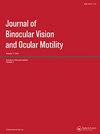Indications for Systemic and Genetic Testing in Patients with Congenital Cataracts
Q3 Medicine
Journal of Binocular Vision and Ocular Motility
Pub Date : 2023-10-02
DOI:10.1080/2576117X.2023.2229812
引用次数: 0
Abstract
ABSTRACT Congenital cataracts account for a significant proportion of blindness in children worldwide. They affect approximately 12–136 per 100,000 births worldwide. A genetic etiology is present in a large proportion of patients and can lead to isolated cataracts or those in the context of genetic multisystem disorders. We present two examples of genetically determined childhood cataracts and briefly review the work-up of such patients. Mutations in numerous genes have been identified that cause congenital cataracts, such as those encoding for crystallins, connexins and aquaporins, as well as some developmental regulatory proteins. Identifying the genetic or molecular etiology of congenital cataract is essential for identifying and better understanding the pathways leading to this disease, and for providing individualized genetic counseling and guiding treatment for possible associated systemic problems.先天性白内障患者接受系统检测和基因检测的指征
摘要 先天性白内障在全球儿童失明中占很大比例。全球每 10 万名新生儿中约有 12 至 136 人患有先天性白内障。大部分患者的病因与遗传有关,可能导致孤立的白内障,也可能导致遗传性多系统疾病。我们列举了两个由遗传因素导致的儿童白内障的病例,并简要回顾了此类患者的检查方法。目前已发现许多基因突变会导致先天性白内障,如编码晶体蛋白、连接蛋白和水汽蛋白的基因,以及一些发育调节蛋白。确定先天性白内障的遗传或分子病因对于确定和更好地了解导致这种疾病的途径、提供个体化遗传咨询和指导治疗可能相关的系统性问题至关重要。
本文章由计算机程序翻译,如有差异,请以英文原文为准。
求助全文
约1分钟内获得全文
求助全文
来源期刊

Journal of Binocular Vision and Ocular Motility
Medicine-Ophthalmology
CiteScore
1.20
自引率
0.00%
发文量
42
 求助内容:
求助内容: 应助结果提醒方式:
应助结果提醒方式:


